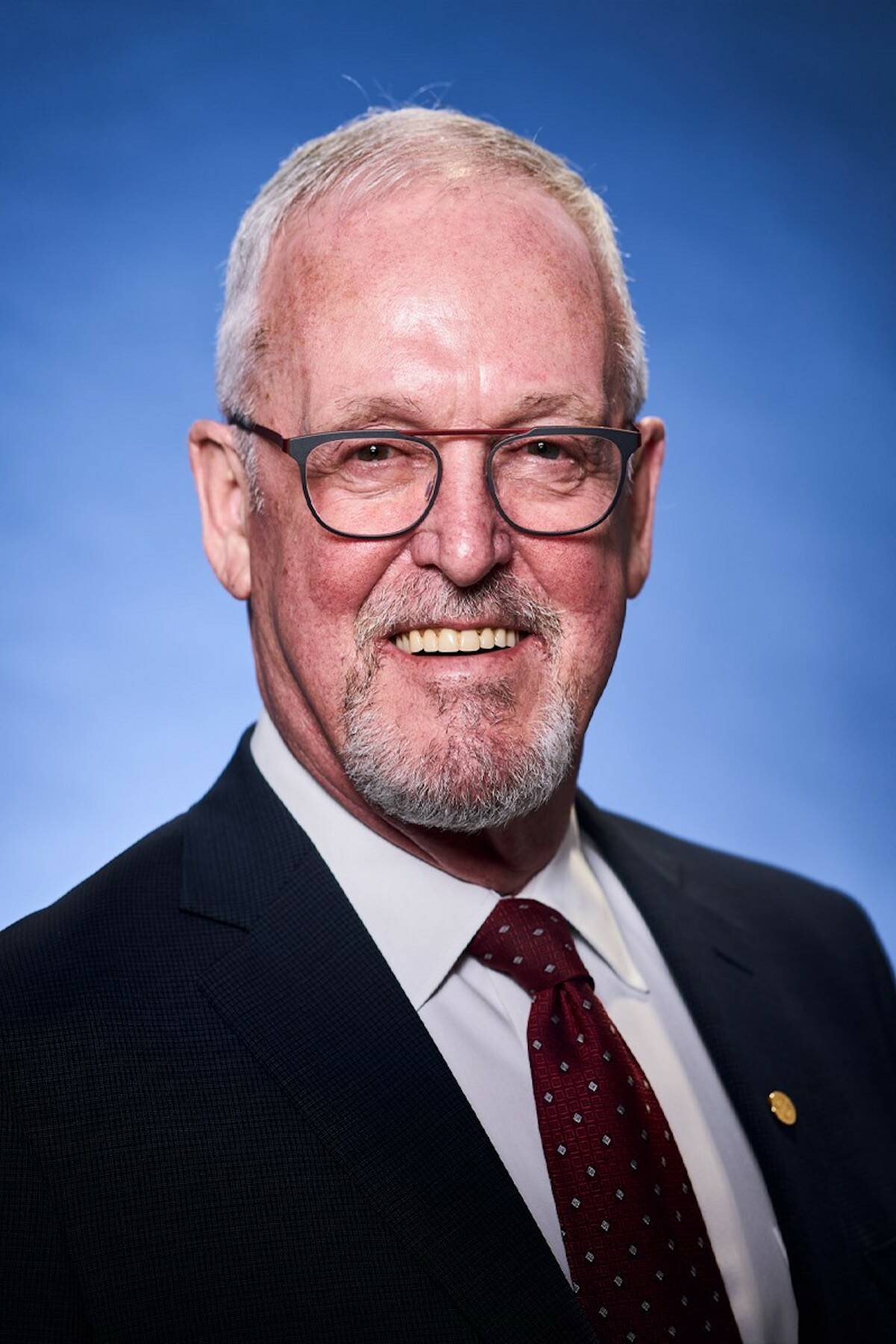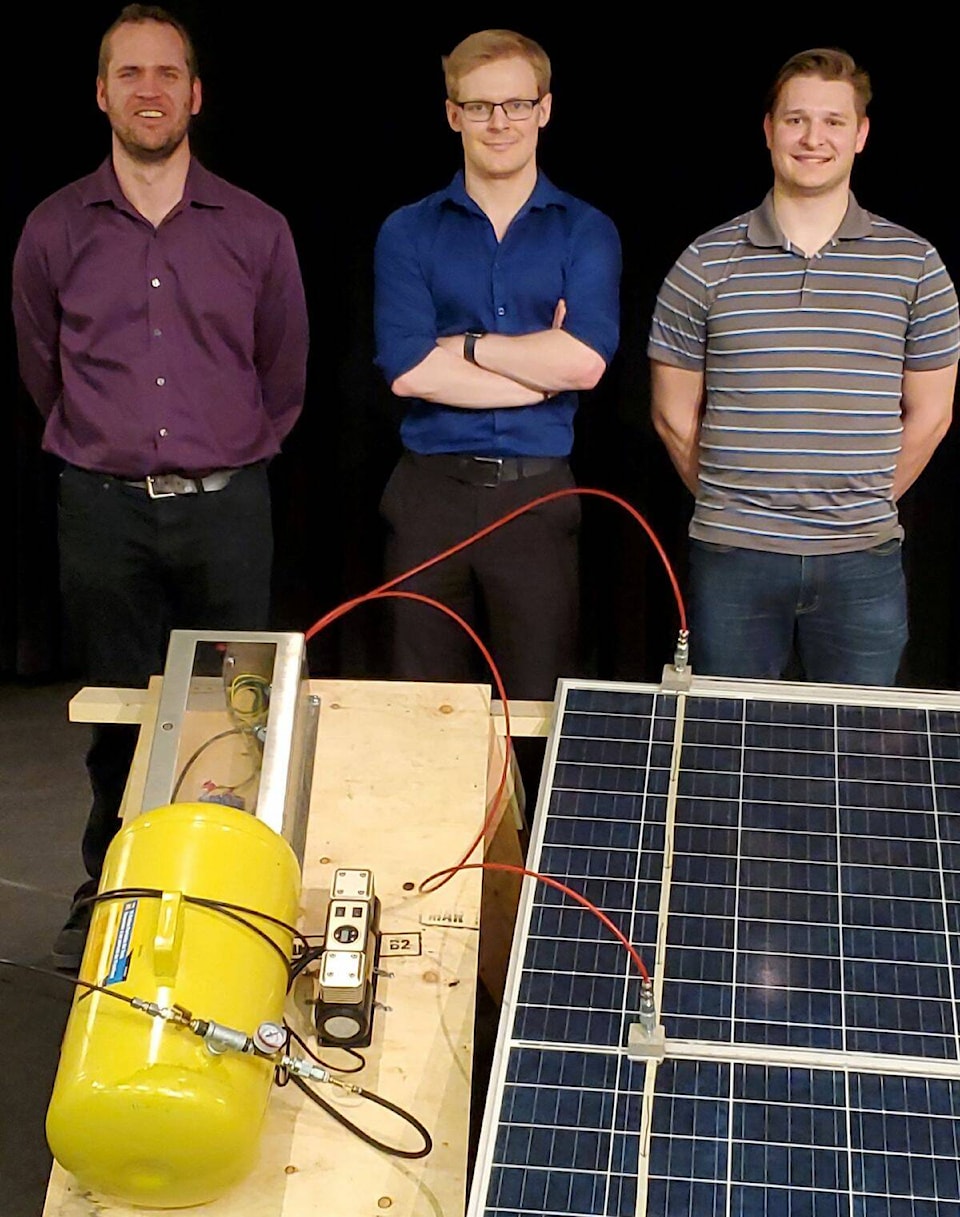A local resident has played a big role in developing a unique and innovative way to keep solar panels clean.
Solar panels are becoming more common as a clean energy source but when they get dirty, their efficiency drops by as much as 50 per cent.
To tackle that problem, former Red Deer Polytechnic engineering technology students Nathan Crombie (of Lacombe), Kyle Victor and Carson West developed a pneumatic air blast cleaning system.
The project has landed the men as provincial finalists for the Association of Science and Engineering Technology Professionals of Alberta’s (ASET) ‘Capstone Project of the Year Award’.
The project they developed shows tremendous promise, according to ASET CEO Barry Cavanaugh.
“I’m amazed in a way, but I’m no longer surprised. Some of these projects are just astonishing,” he said. “They demonstrate what our members bring to the community - this kind of innovation. I’m really impressed. It’s revolutionary,” he added.
Cavanaugh said that the Capstone Project of the Year Awards were launched in part because ASET wanted to recognize students and the educational institutions that they come from.
“And the more we looked at it, we thought that the public also needs to know about this,” he said.
“It’s kind of a well-kept secret - (what) goes on in these young minds at the polytechnics and colleges in the province,” he said. “Each of these students, in their final year, has to do a Capstone project that demonstrates what they have learned and how they would apply it.
“Those projects are of course submitted to their professors and at some point along the line, those colleges and polytechnics choose what they think are two of the best and the most innovative,” he explained.
“We get eight from around the province - two from each institution, and then the awards committee and subject experts sit down and try to determine which one deserves to win. It’s really hard,” he said. “As far as I’m concerned, they are all winners.
“I think the public needs to know about them and what they bring to the community,” he added of the nominees.
Cavanaugh also noted how the solar panel project represents a big step forward in maximizing the efficiency of an important clean energy source and shows the combination of practicality and innovation that characterizes the engineering technology profession.
The reason?
According to a release, the project, “Requires minimal maintenance, is cost-effective and simple to install, is fully automated, needs no water supply, has few moving parts, can operate in any climate, is adaptable to any panel array geometry and has the potential to be powered by the same solar panel system it is designed to clean.”
Currently, three types of systems are used for cleaning solar panels - manual labour is mainly used for residential set-ups; robotic cleaners which are usually associated with solar farms and driving cleaners which necessitate the use of large volumes of water as well as costly manual labour.
Crombie, Victor and West’s prototype utilizes one pneumatic air sprayer which is attached to the top of the solar panel and another in the middle.
An air compressor with tubing is connected to the sprayers, noted the release.
“An Arduino kit, which is an open-source electronics platform based on easy-to-use hardware and software, is programmed to run a timed sequence for each sprayer.”
Crombie said it all starts with professors presenting a problem to the students, and it’s up to the teams to come up with a concept to deal effectively with it.
The brainstorming begins followed by mapping out specific solutions to the issue.
From there, the three came up with the breakthrough concept.
“We were happy and excited to be nominated as a finalist for the honour,” said Crombie.
Victor also said the team had two goals for the project.
“The first was to create a design applicable to both residential and industrial solar panel systems. The second was to ensure that it was cheaper and more efficient than cleaning systems currently available.”
The team’s project is one of eight finalists up for the 2022 Capstone Project of the Year Award, the winner of which will be announced later this year.
ASET represents about 17,000 members, including technology students, recent graduates and certified members in 21 disciplines and more than 120 occupations across a plethora of industries. “They hold themselves to the highest possible standards,” said Cavanaugh.

